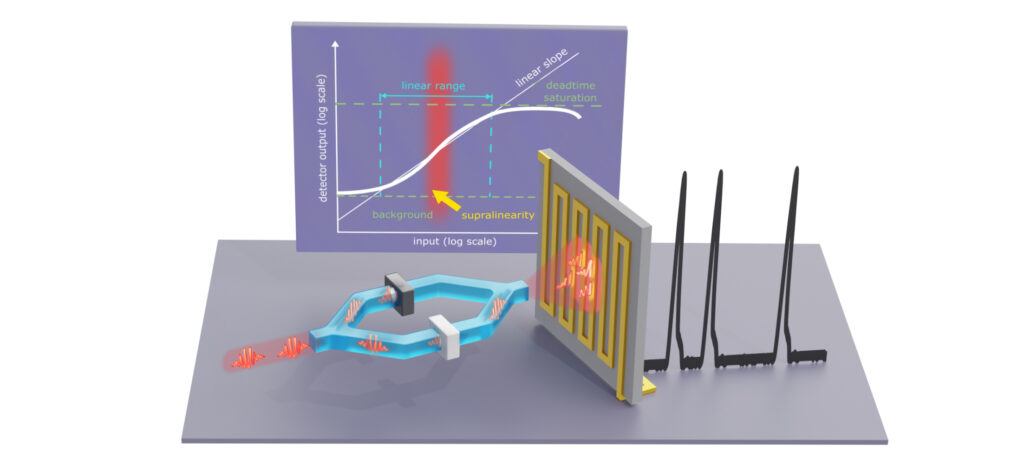Our research revealed anomalous nonlinear effects in single-photon detectors, challenging established theories. Understanding and fully characterizing these effects will significantly enhance measurement accuracy in various scientific and technological applications. The results were published in Applied Physics Reviews. The preprint is publicly available at arXiv:2109.08347.

Single-photon detectors have long been the backbone of cutting-edge technologies such as spectroscopy, biomedical imaging, optical communication, and sensing. Our research team recently conducted a study to investigate the nonlinear behavior of these detectors. Our findings not only provide a precise characterization of the nonlinearity of single-photon detectors but also uncover a previously unknown supralinear effect.
Our main objective was to directly measure the absolute nonlinearity of single-photon detectors using state-of-the-art techniques. Our study focused on two types of detectors: single-photon avalanche diodes (SPADs) and superconducting nanowire single-photon detectors (SNSPDs). Importantly, our measurement approach did not require a calibrated single-photon source, a calibrated reference detector, or time-resolved detection, ensuring the robustness of our results and reflecting the intrinsic properties of the detectors.
During our investigation of SPADs, we discovered a significant discrepancy between established theoretical models and our measured data. Moreover, we observed an anomalous supralinear behavior of the SPADs that challenges our current understanding and known parameters. This unexpected phenomenon presents a fascinating opportunity for further exploration, offering new insights into SPADs and their potential applications.
In the case of SNSPDs, we conducted an extensive analysis of their nonlinearity across an unprecedented range of incident illumination and bias current values, surpassing previous characterization efforts. We observed supralinearity in SNSPDs under continuous illumination, even at remarkably low detection rates that had never been observed before. These groundbreaking results shed light on the intricate interplay of non-trivial phenomena in single-photon detection, which have thus far eluded accurate theoretical descriptions.
Our findings have significant implications for various fields that heavily rely on single-photon detectors. By understanding and characterizing the nonlinear response of these devices, we can improve the accuracy and reliability of measurements in applications such as quantum information processing and biomedical imaging. Furthermore, the discovery of the anomalous supralinear behavior in SPADs opens up a new frontier in single-photon detection. Our future research will focus on unraveling the underlying mechanisms behind this phenomenon, which will drive advancements in detection technologies and contribute to the development of cutting-edge applications.
Our research paper presents precise nonlinearity characterization of single-photon detectors and reveals a previously unknown supralinear effect. By directly measuring the absolute nonlinearity of these detectors, we challenge existing theoretical models and uncover novel phenomena that defy current explanations. This study not only advances our understanding of single-photon detectors but also has the potential to enhance their performance and unlock exciting applications in various scientific and technological domains. Stay tuned for further updates as we continue to push the boundaries of single-photon detection research.
Illustration credit: Monika Tomanová, monikatomanova.art


